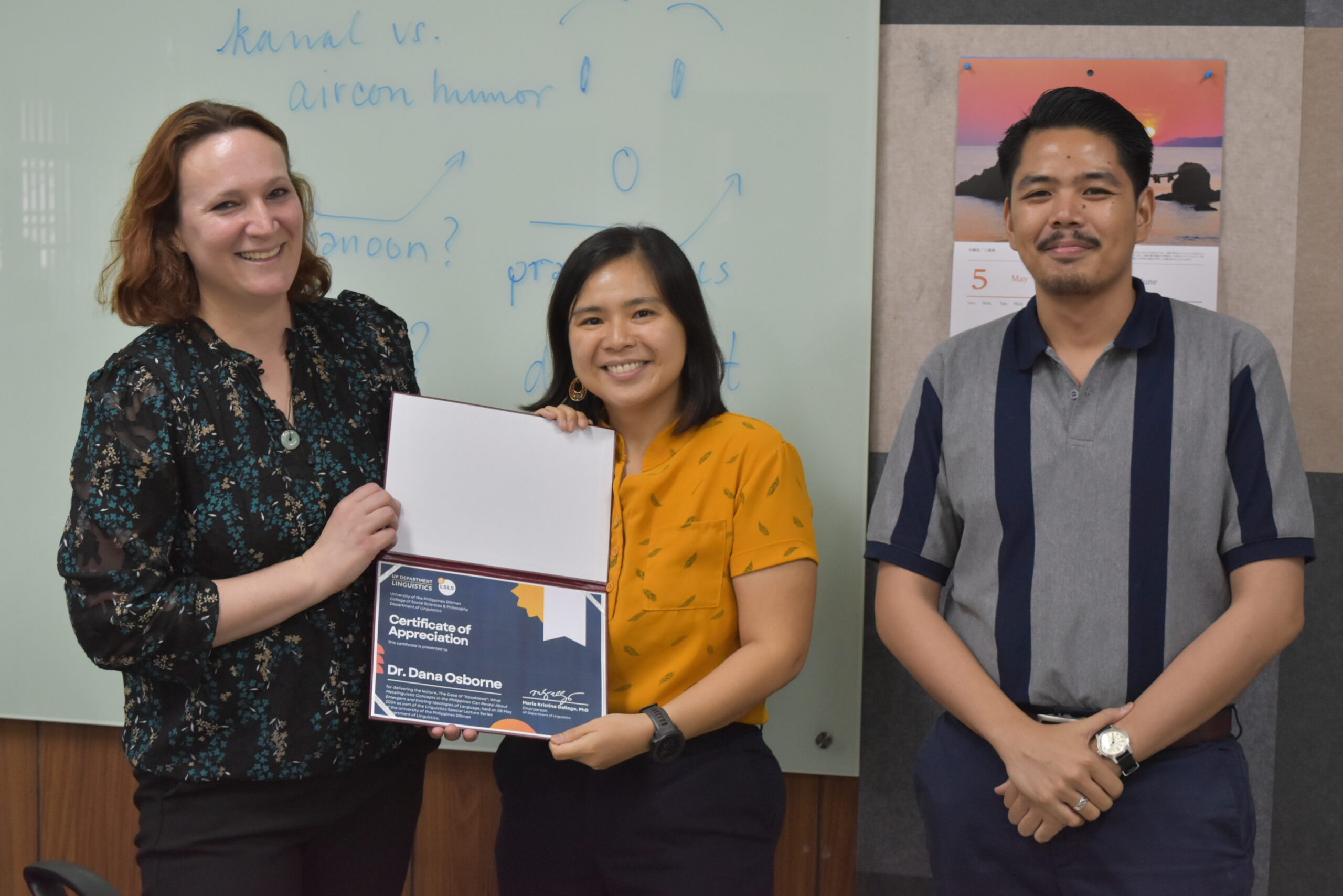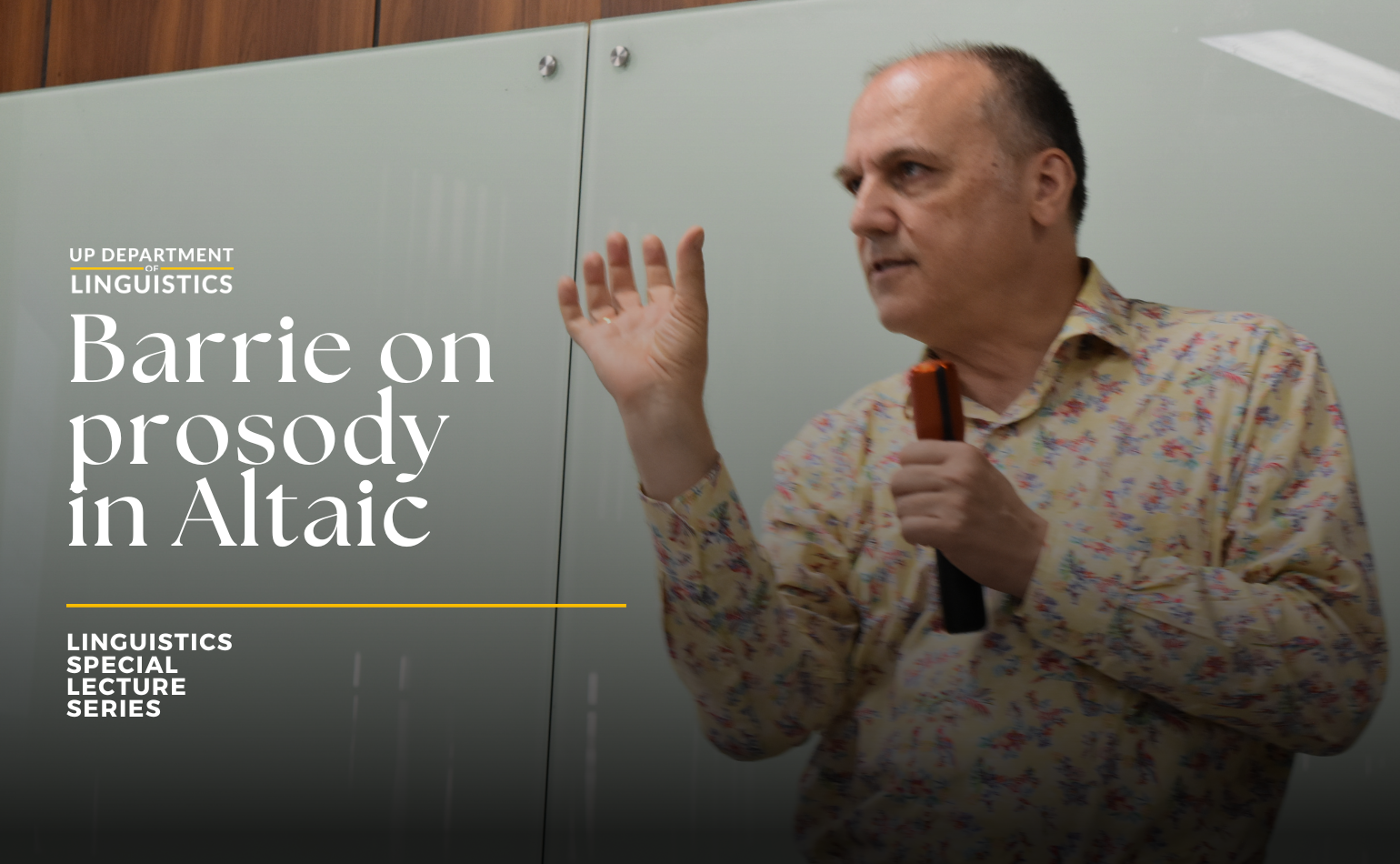
Dr. Dana Osborne, associate professor at the Toronto Metropolitan University, discussed the concept of “nosebleed” through language at the second installment of this year’s Linguistics Special Lecture Series (LSLS).
The talk, with the title “The Case of Nosebleed: What Metalinguistic Concepts in the Philippines Can Reveal About Emergent and Existing Ideologies of Language,” was held last 08 May at Palma Hall Room 428. Undergraduate students and their teachers engaged with the topic and shared personal anecdotes related to prestige, identity and multilingualism vis-a-vis nosebleed.
She argued that whether or not speakers agree with the use of the term “nosebleed” as it is used in interaction, that as analysts, we should still consider its function and effects.
Serving as an expansion of her 2018 work, Dr. Osborne’s current study aims to investigate the place of nosebleed in conversations. Usually, it is uttered when an interlocutor speaks in English or uses a high-falutin English word during situations and domains which commonly require the use of Tagalog. “One might say, ‘it’s hard to understand you.’ ‘Nosebleed! Ay sosyal,” she said. The term is used in other situations, as well, as its meaning is complex in real-world use.
Adopting concepts from anthropology and relating theories from philosophical thinkers like Pierre Bourdieu and Michel Foucault, she said that nosebleed is culturally significant as it reflects what may be linguistically accepted within a society of speakers: “It’s not just about English, it’s about building boundaries around language.”
After her presentation, the audience was invited to share their experiences and introduce strategies which might have not been covered yet. One student recalled the use of high intonation and repetition when using technical jargon to close the linguistic distance and social burden between two speakers. (Ano kasi ‘yang sagot diyan eh, pragmatics. Pragmatics!) Some students meanwhile related facial expressions, gestures, and older phrases like Meganon (‘may ganoon’).
Stay tuned for the next events by following the Department’s website and social media pages!
Published by UP Department of Linguistics



